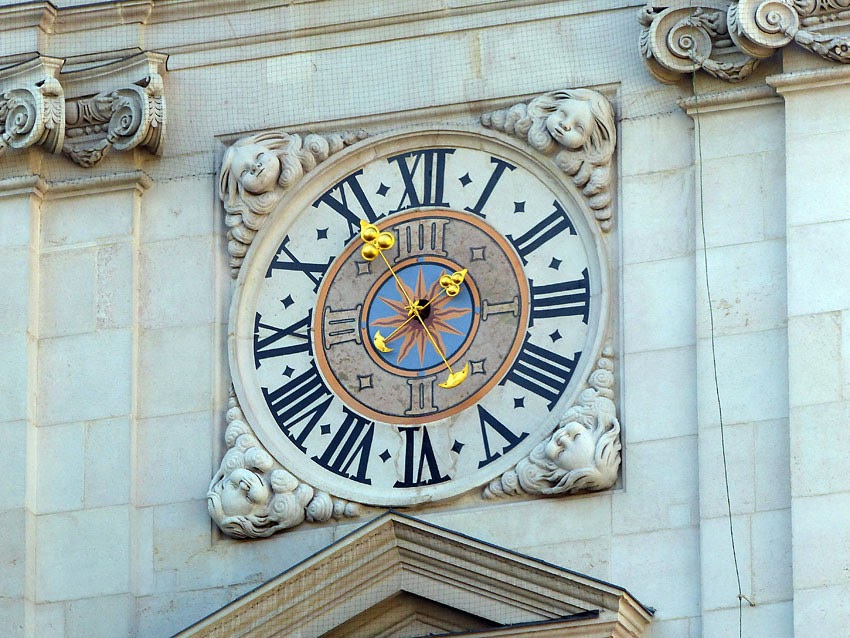
Marcus Hanke
[PuristSPro Moderator]
11515

Rainer Nienaber's "Historical"

This watch originated from a discussion in a German-language watch forum some years ago. There, I pointed out (and demonstrated with pics) that in older times, the tower clocks only displayed the hours with one large hour hand. A bit later, a short hand, indicating the quarter hours on a smaller dial section was added and synchronized with the common quarter hours chime of the bells. Back then, the minutes were not supposed to be important, nobody would ever make an appointment at "ten past eleven", or even '"a quarter to nine".

However, this changed in the course of the so-called "industrial revolution" during the 19th century, when fixed work shifts and an ever-growing appointment scheme (at least in the cities) made it necessary to shift the minutes into the focus of attention. The result was a large minute hand, while the hours were downgraded to a short hand.
Whenever an old tower clock was broken, it was replaced by a movement with a "modern display", especially after World War II, when so many mechanical clocks were destroyed and the restored towers received electric movements. Weirdly, the painted dials outside remained the same, with a large hour circle and a small one for the quarter hours.
Rainer Nienaber, AHCI watchmaker in Bünde/Germany, was intrigued by this discussion and decided to build a wristwatch replicating this kind of historical display. However, he modified that by making the large hour hand rotating only once per day, thus making necessary a 24 hours dial. Since all movements configure the minute hand on top of the hour hand, he had to change that into the opposite, so that the small minute hand was stacked under the dominant hour.


Typical for Rainer is the beautiful pattern milled into the silver-coated dial. The quarter hours sector in the center is left flat, nicely catching the sunlight.
The hands are - of course - made by hand and heat-blued and perfectly match the vintage character of the watch.
The steel case measures 42mm in diameter and features a coin-edge bezel and a large crown that greatly facilitates winding the watch.


Also very beautifully finished is the modified A. Schild cal. AS 1130 movement, that can be considered Rainer's standard base movement for most of his watches.



Of course, reading the watch is not an issue of a quick glance. As it was the case in the seventeenth or eighteenth centuries, the exact minutes were not important, and therefore you won't be able to really recognize them. On the one hand, the small minute hand often disappears in light reflexes on the silver dial, and on the other hand, only the quarter hours positions are marked on the segment. And the large hour hand, too, doesn't make things easy, due to its 24 hours cycle with only light contrast between the silver dial surface and the yellow gold finish of the rainsed numerals. So, generally, it is not advised to make oneself depending on this watch to realize a dense appointment schedule - unless you are so important that you can afford being late some ten or fifteen minutes, of course.

Marcus

Rainer Nienaber's "Historical"
This watch originated from a discussion in a German-language watch forum some years ago. There, I pointed out (and demonstrated with pics) that in older times, the tower clocks only displayed the hours with one large hour hand. A bit later, a short hand, ...

Very interesting
Appreciate the historical context and lesson It's always interesting to me how what do many see as static is really fluid - like the role and telling of time

I love it Marcus!
Such a positiv different appraoch it really make it standing out! 👍🏻🍀☀️🎯

Here are some photos of a clock I saw last spring
In this case, the hours are on the large dial the minutes are shown on the smaller dial below. Thanks for explaining it to us, Marcus. Cheers, Cazalea ...